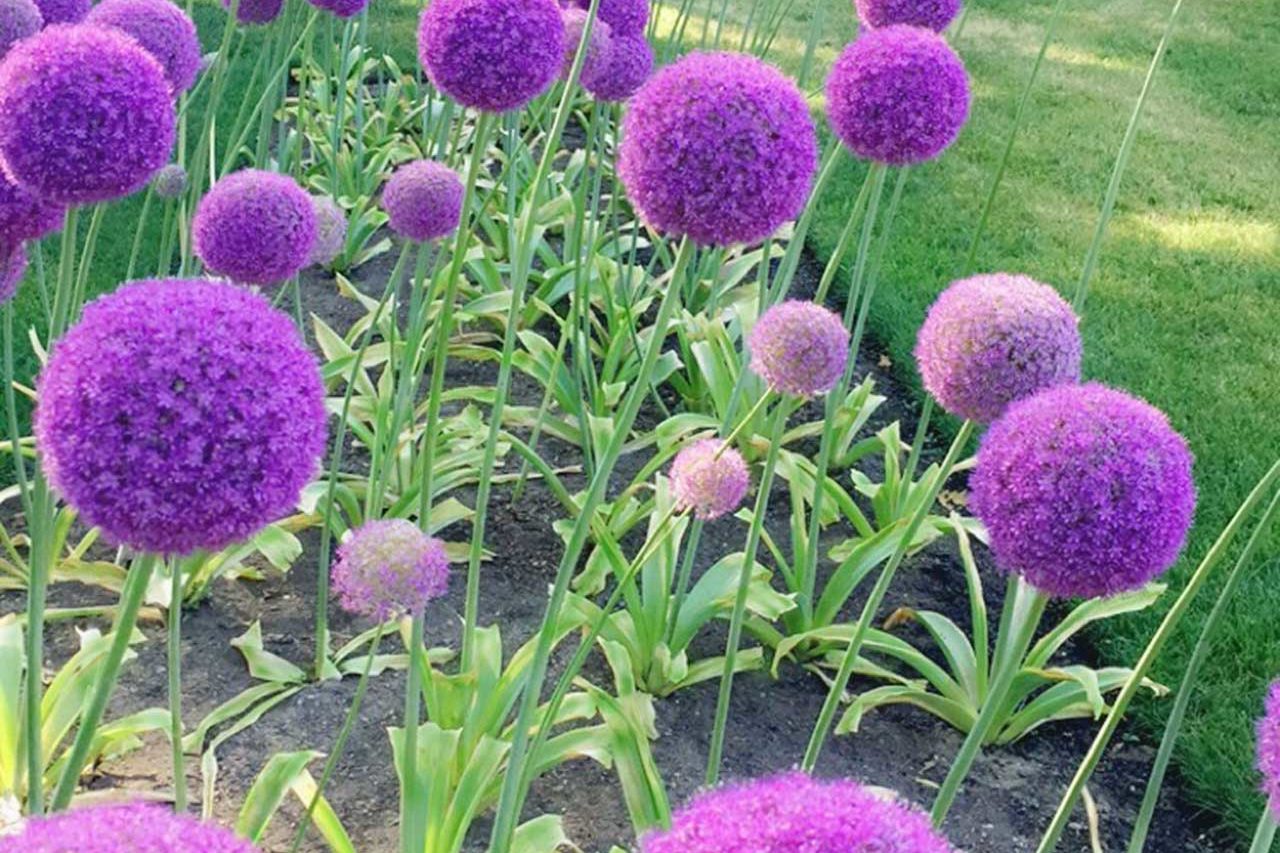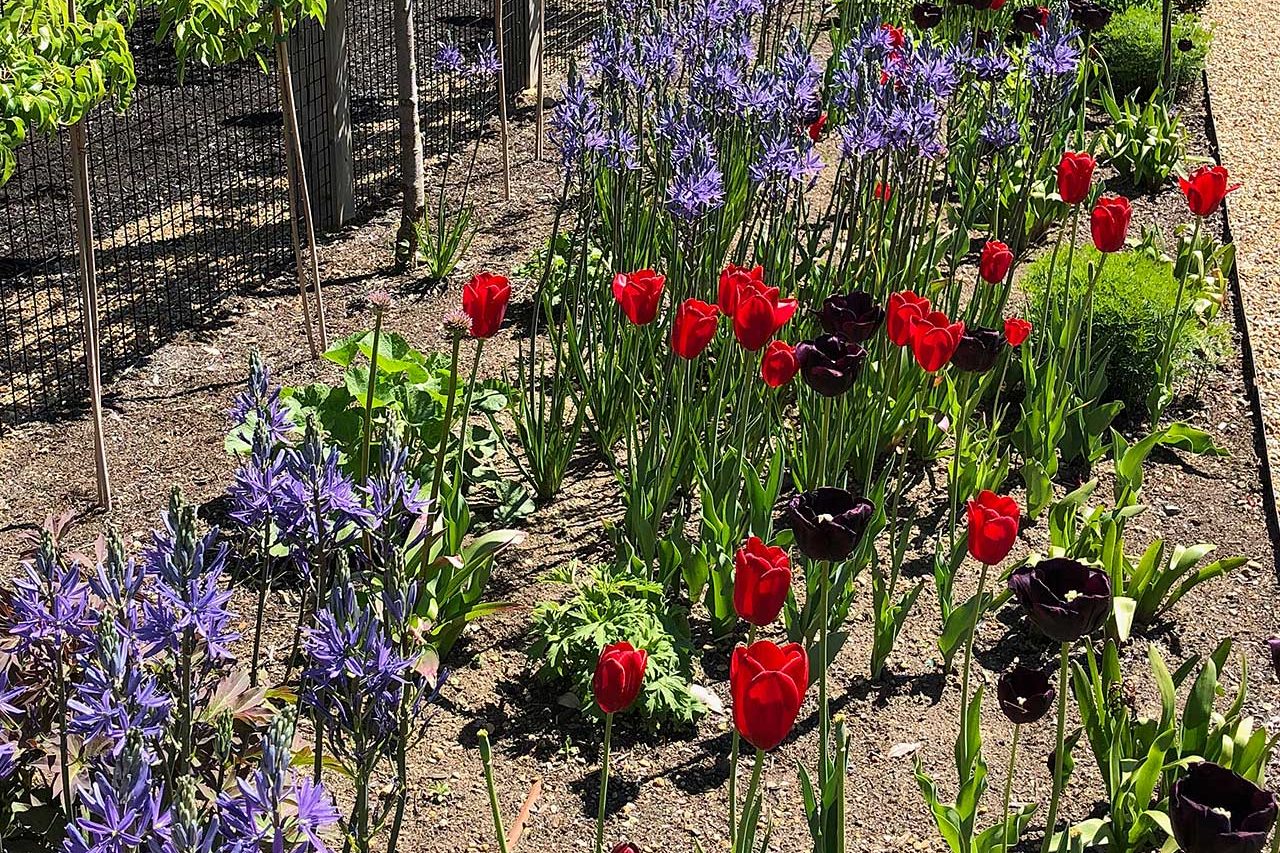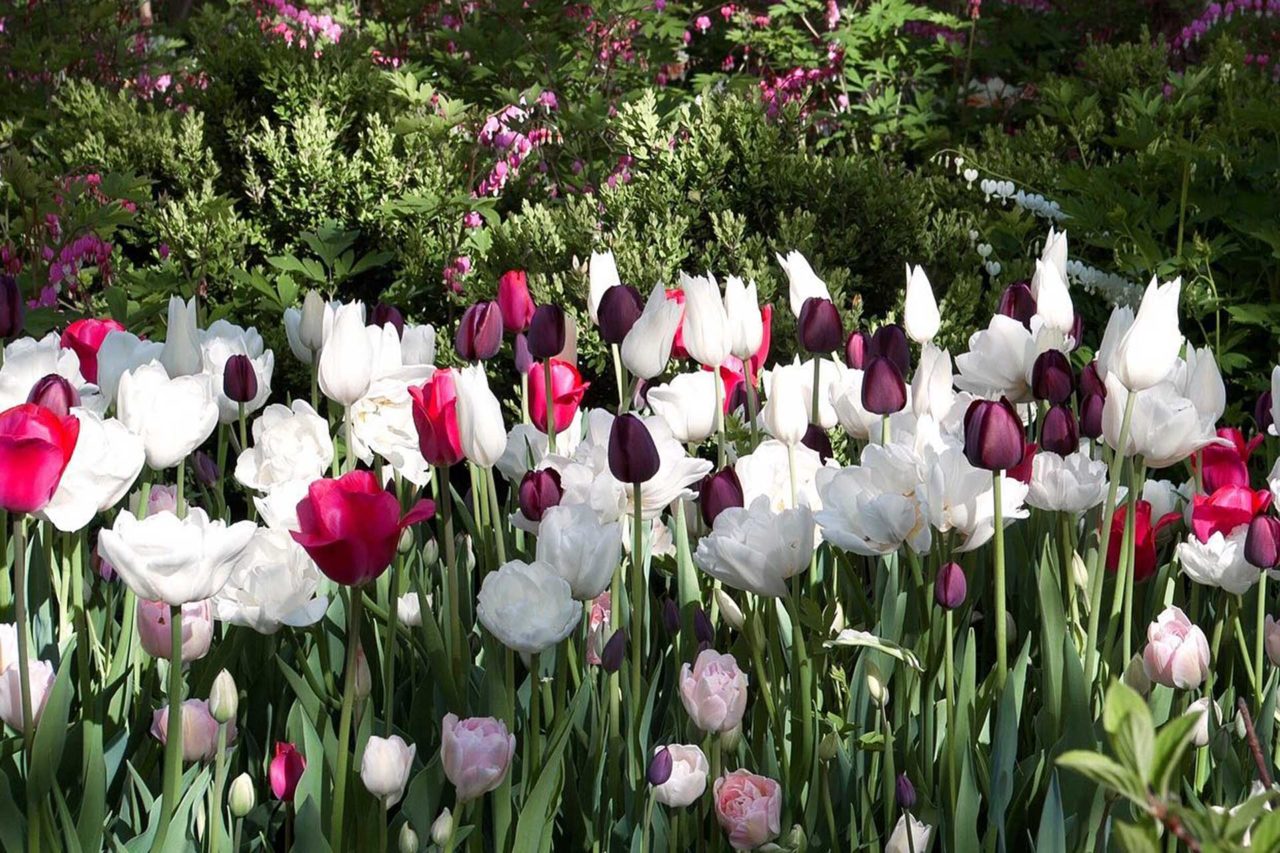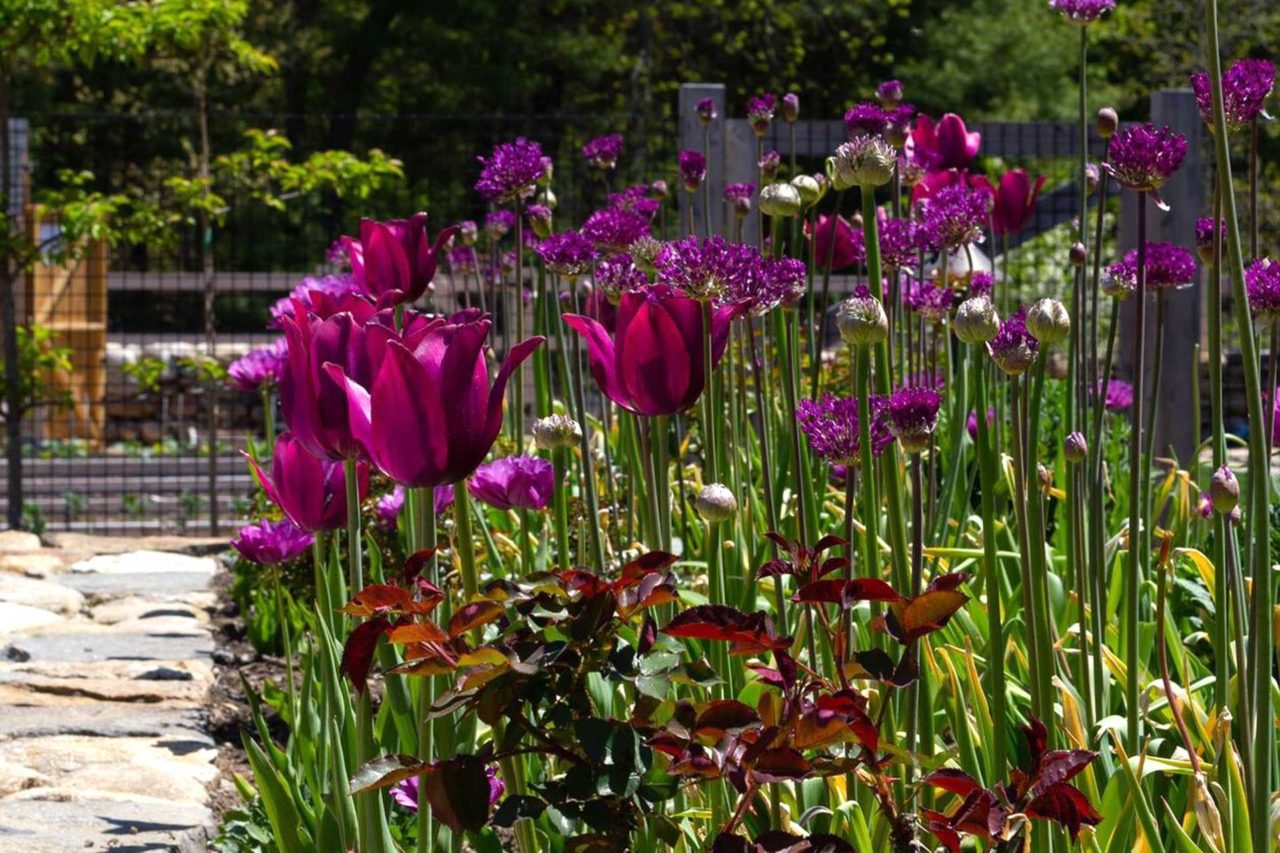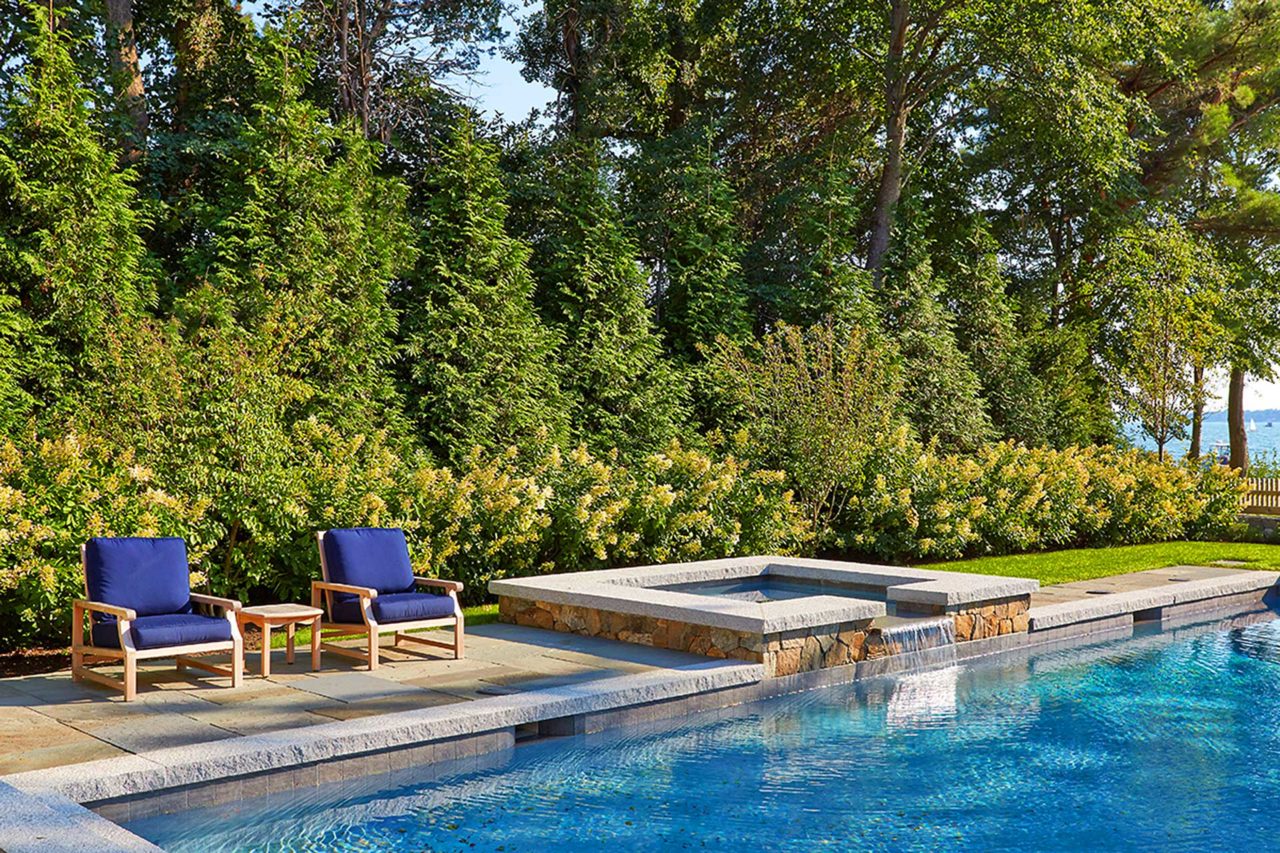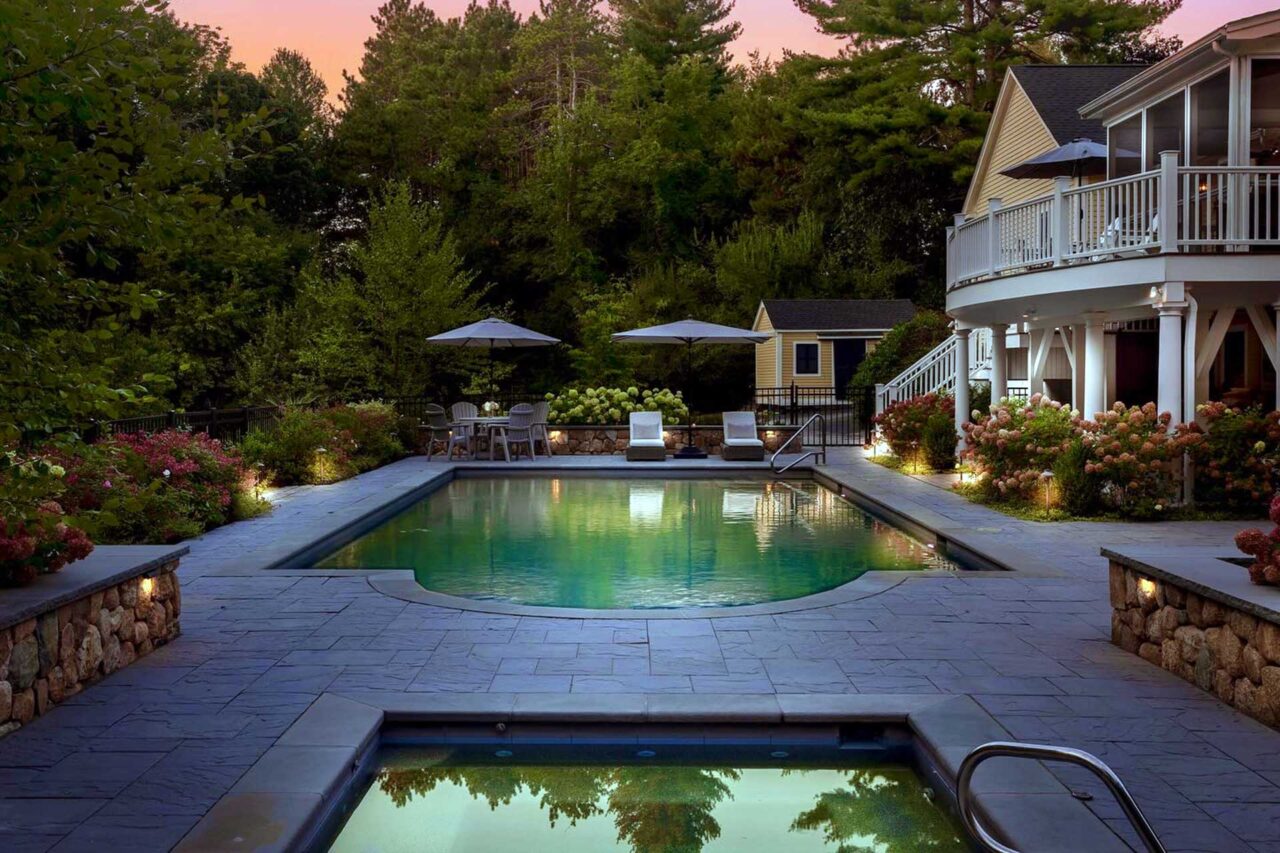Getting Started with Bulbs
Spring bulbs are wonderful in every way. Many of them bloom early, while most other plants haven’t dared to break bud. They have interesting shapes, colors, and textures and there is something magical about the fact that they are planted in the fall and then lay dormant until they poke up through the earth at the first sign of the spring thaw.
Key Takeaways
- A thoughtfully planned bulb garden provides seasonal excitement, layered blooms, and long-term beauty with minimal intervention.
- You’ll gain strategic advice on placement, quantities, and combining early and late bloomers for continuous interest.
- The post transforms bulb planting from a random scatter into a curated spring showcase.
I’m not here to tell you how to physically plant bulbs. That information is written on the packaging of all bulbs or easily found online. I’m here to tell you about how to design with them. There are so many things to consider and there is so much fun to have!
Make a Plan
First plan the general location. It’s important to place bulbs where you know you will see them. If you’re planting a variety that blooms early, like daffodils or muscari, you want to plant them where you will see them daily such as along the driveway or within view of the kitchen windows. There is no sense in putting them around a back corner where you only go in the summer. This may mean locating them in beds that don’t typically have perennials, between shrubs, at the base of trees, or even within a wooded area that isn’t usually considered part of the formal landscape.
Late bloomers, such as allium or camassia are well suited to perennial beds. They can be added between other plants, especially late summer flowering shrubs and perennials such as hibiscus or hydrangeas.
How Many?
Next think about quantity. This is key for a successful display. It’s better to get a lot of one type, than to get a few of many different kinds. Purchase them in quantities of 100. I typically plant them in groups of 7-10 so 100 gets me 10-14 groupings. It may take a little more elbow grease to get so many planted but it will pay off! If you are looking for diversity, consider adding different types year after year.
Plan for Height
Keep in mind that the height of the flowers is also important because you want to see each and every flower that was painstakingly set in to the ground. It’s best to place shorter bulbs such as hyacinths toward the front of the bed and taller ones like tulips toward the middle and the back. Note that there can be significant variation in the heights of different tulips, daffodils or other bulbs so it’s always important to read the packaging!
Have Fun!
Planting tulips can be an opportunity to diverge from the typical color pallet since they come in almost every hue. If you’re someone who loves tranquil greens and white for the summer months, starting the year out with a swath of lip stick red tulips could be an exciting way to change things up without having to commit to a whole season of the color. Using allium globe master in a perennial bed can add an element of the expected with its round Dr. Seuss like form and purple color. Everyone is always drawn to this unique flower.
Spreading hundreds of daffodils in lightly wooded area or on a grassy hillside can provide such a joyful sight in spring, it’s hard not to add more every year.
In short: plant lots of bulbs and have fun. Then sit back for a few months and get ready to enjoy an incredible spring display!
